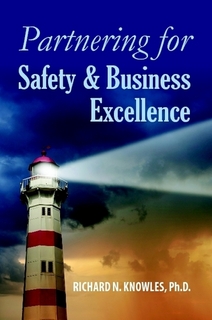(Richard N. Knowles & Associates is in alliance with The Workplace Violence Prevention Institute. Accordingly, it is appropriate to lift up how Workplace Violence and Safety are related.)
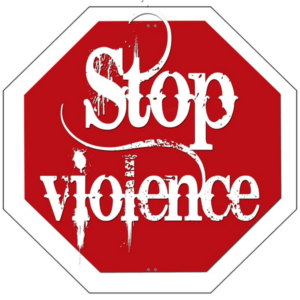 Violence at work is a growing problem. Shootings are becoming one of the leading causes of workplace deaths. Many organizations are having the local law enforcement people come in and do active shooter programs. This is a start. Preventing workplace violence has several aspects and becoming aware of how vulnerable your workplace may be, requires a physical-safety and psychological-safety assessment. These problems just don’t happen overnight in most cases. When someone is struggling with a serious problem at home or at work and have to just keep it to themselves, they get more and more lonely and resentful. If they are subjected to bullying and harassment things get bad, quickly. Stuff can build up to a tragedy. (How well do your supervisors know their people?)
Violence at work is a growing problem. Shootings are becoming one of the leading causes of workplace deaths. Many organizations are having the local law enforcement people come in and do active shooter programs. This is a start. Preventing workplace violence has several aspects and becoming aware of how vulnerable your workplace may be, requires a physical-safety and psychological-safety assessment. These problems just don’t happen overnight in most cases. When someone is struggling with a serious problem at home or at work and have to just keep it to themselves, they get more and more lonely and resentful. If they are subjected to bullying and harassment things get bad, quickly. Stuff can build up to a tragedy. (How well do your supervisors know their people?)
Most of the time when these incidents are investigated, co-workers say that they knew the person was not right, having a problem and being isolated. They often report that they were concerned enough about the person that they tried to avoid them and stay away.
In many organizations where the information should be flowing up and down, the organizations are restricted or blocked, and top management knows only about 10% of what is happening on the shop floor. Information flows need to open up so that critical information is shared and acted upon. A powerful way to open up the flow of information is for the top people to get out of their offices, walk around their facilities and talk with the people. The managers can encourage people to look out for each other and help each other. Talking together, listening to each other, learning together is an effective way for the organization to build the psychological safety where it is okay for people to talk together, learn together and help each other better.
Looking out for each other, helping each other, talking together, listening and learning are keys to improving both the physical and psychological safety in our organizations.
Richard Knowles and Associates has a workable dialog process to help leaders and their teams, organizations, hold the difficult conversations that need to be held around preventing workplace violence. There is a process available that is easily integrated into the day-to-day workplace. It is not enough to prevent hiring the bad “hire,” nor is it enough to prevent promoting into supervision the bad “supervisor” where incivilities beget harassment which can beget taunting which can beget all sorts of dysfunctional, hurtful behaviors, and which can create hostile workplaces and breeding grounds for more severe violent behaviors. With a strong, comprehensive, positive workplace violence prevention program, tragedies can be prevented – hostile workplaces can become civil workplaces. Understanding workplace violence prevention means leaders need to look at both the physical safety/security side and the psychological safety side of one’s business, organization and teams. Call us 716-622-6467 to learn more or send me an email.

 As I travel around and watch things happening, I see so many people in a big hurry. We are coming to the end of the good weather so people are hurrying to get outside jobs finished up. Roofers are really busy and not taking the time to properly use and secure their fall protection. I read of a recent 29-story fall in New York City when a guy on a big construction site fell through an unsecured hole in the floor.
As I travel around and watch things happening, I see so many people in a big hurry. We are coming to the end of the good weather so people are hurrying to get outside jobs finished up. Roofers are really busy and not taking the time to properly use and secure their fall protection. I read of a recent 29-story fall in New York City when a guy on a big construction site fell through an unsecured hole in the floor. A good, proven approach is to have brief start up meetings to review the hazards of the day’s work, making sure we have the right PPE and other equipment in place and used, asking each other about what might go wrong and working to avoid this. We need to look over the schedules and be sure we have the equipment we need and the right people for the work.
A good, proven approach is to have brief start up meetings to review the hazards of the day’s work, making sure we have the right PPE and other equipment in place and used, asking each other about what might go wrong and working to avoid this. We need to look over the schedules and be sure we have the equipment we need and the right people for the work. Changes in our workplaces keep coming fast and furiously. A recent report released by Price-Waterhouse-Coopers indicates that by 2030 the pressure on workers to perform will be huge. Organizations will be using all sorts of ways to track performance…even putting chips under their workers skin to look at location, performance, health and wellness! They may be tracking safety performance as well. Managers will need to be having “mature conversations” with the people about all this change and the feeling of threat this creates for their people and their jobs. The pressure to keep improving skills and performance continues to increase.
Changes in our workplaces keep coming fast and furiously. A recent report released by Price-Waterhouse-Coopers indicates that by 2030 the pressure on workers to perform will be huge. Organizations will be using all sorts of ways to track performance…even putting chips under their workers skin to look at location, performance, health and wellness! They may be tracking safety performance as well. Managers will need to be having “mature conversations” with the people about all this change and the feeling of threat this creates for their people and their jobs. The pressure to keep improving skills and performance continues to increase.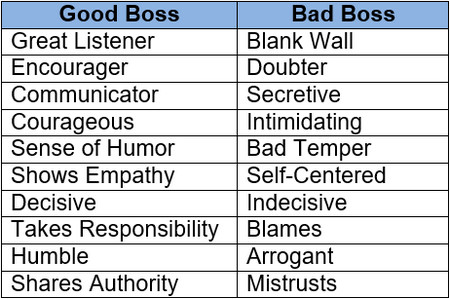
 Employee engagement has long been a concern to the U.S. workforce…it is a vital component of employee attraction and retention. Yet, with all the leadership programs targeted to “engage better with employees,” there hasn’t been a significant shift in relationships.
Employee engagement has long been a concern to the U.S. workforce…it is a vital component of employee attraction and retention. Yet, with all the leadership programs targeted to “engage better with employees,” there hasn’t been a significant shift in relationships. In the June 2017 issue of EHS-Today is an article about engaging and training workers as a foundation block for an effective safety program, while applying critical thinking principles. The intent, of course, is to seek out more and more opportunities to have people involved and participating in safety risk assessment, engaging at a grassroots level for finding solutions and training whole teams in the entire process. At a deep level, each of us knows that having people involved and with you in moving your business or organization forward is a good thing!
In the June 2017 issue of EHS-Today is an article about engaging and training workers as a foundation block for an effective safety program, while applying critical thinking principles. The intent, of course, is to seek out more and more opportunities to have people involved and participating in safety risk assessment, engaging at a grassroots level for finding solutions and training whole teams in the entire process. At a deep level, each of us knows that having people involved and with you in moving your business or organization forward is a good thing! I just saw an announcement that the Liberty Mutual Research Institute for Safety was closing after 59 years, to reduce costs. The ISO 45001 Standard is in the final stages and is aimed at improving safety around the world. Yet some people are reacting that it will not make a difference because of management indifference or cost restraints.
I just saw an announcement that the Liberty Mutual Research Institute for Safety was closing after 59 years, to reduce costs. The ISO 45001 Standard is in the final stages and is aimed at improving safety around the world. Yet some people are reacting that it will not make a difference because of management indifference or cost restraints. Many of you who have been reading this newsletter know that our emphasis is on Partner Centered Leadership. We emphasize the importance of supervisors and managers getting into their workplaces each day and talking with the people. Talking with the people is a key to breaking through to safety excellence. Talking about the risks they face each day, how they are managing them, how their kids are doing, how the safety is doing, how the business is doing, asking them what they see as to ways to improve their own work, asking about problems they are dealing with, etc. Doing this with respect and really listening are vitally important.
Many of you who have been reading this newsletter know that our emphasis is on Partner Centered Leadership. We emphasize the importance of supervisors and managers getting into their workplaces each day and talking with the people. Talking with the people is a key to breaking through to safety excellence. Talking about the risks they face each day, how they are managing them, how their kids are doing, how the safety is doing, how the business is doing, asking them what they see as to ways to improve their own work, asking about problems they are dealing with, etc. Doing this with respect and really listening are vitally important. The American Society for Safety Engineers (soon to be The American Society for Safety Professionals) in Denver, Colorado, on June 19-22, 2017, was attended by about 5,000 people. This was a record for attendance. There were lots of papers and a huge trade show exhibit. I never saw so much safety equipment and other offerings.
The American Society for Safety Engineers (soon to be The American Society for Safety Professionals) in Denver, Colorado, on June 19-22, 2017, was attended by about 5,000 people. This was a record for attendance. There were lots of papers and a huge trade show exhibit. I never saw so much safety equipment and other offerings.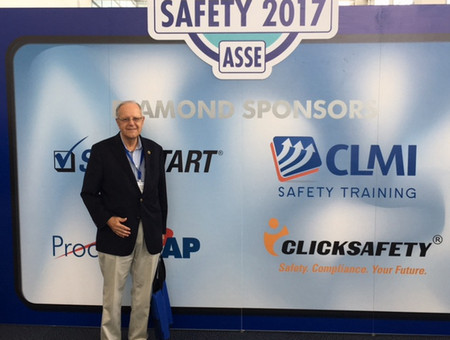



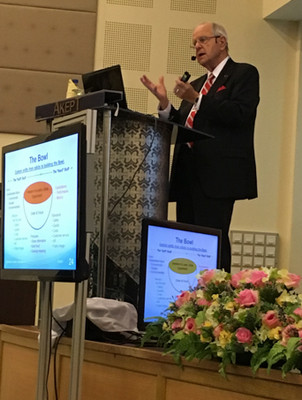
 I love talking with people and getting to know them. Sometimes it is really interesting and sometimes it gets quite funny. The other night I was at the local piano bar, sitting between two older gentlemen. One was an 86-year-old retired colonel who was pretending to play his imaginary drums along with the piano player and the other guy introduced himself to me 5 times in the first 10 minutes. Sometimes you just don’t know until you start talking.
I love talking with people and getting to know them. Sometimes it is really interesting and sometimes it gets quite funny. The other night I was at the local piano bar, sitting between two older gentlemen. One was an 86-year-old retired colonel who was pretending to play his imaginary drums along with the piano player and the other guy introduced himself to me 5 times in the first 10 minutes. Sometimes you just don’t know until you start talking.